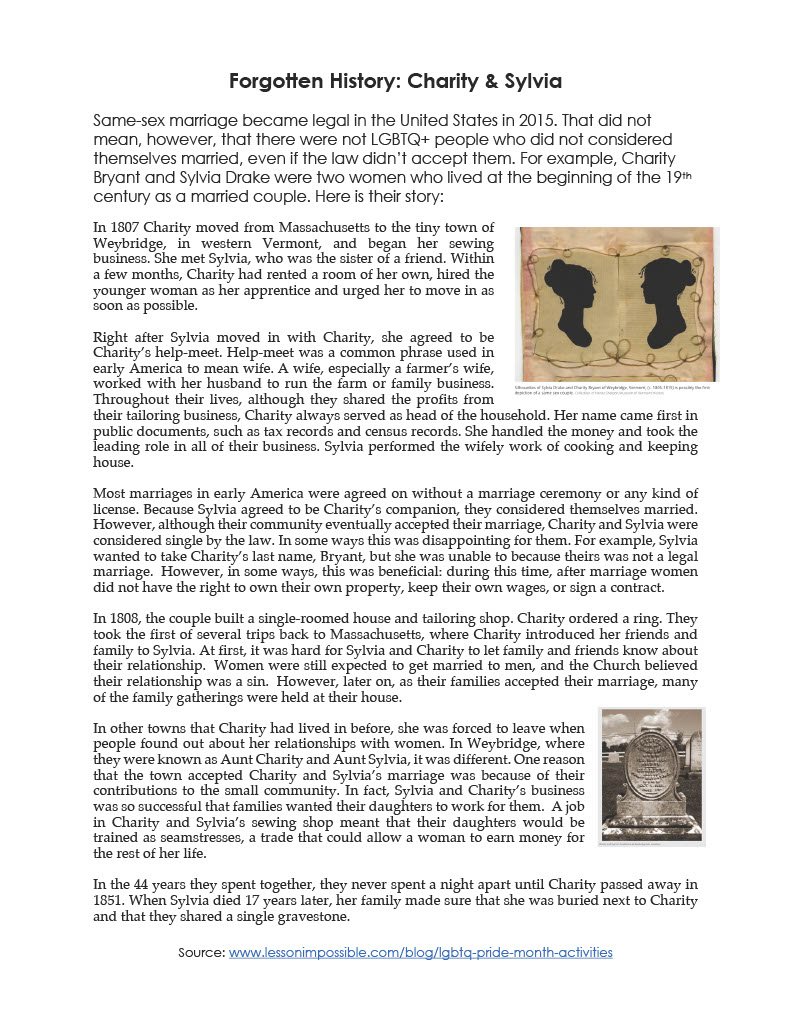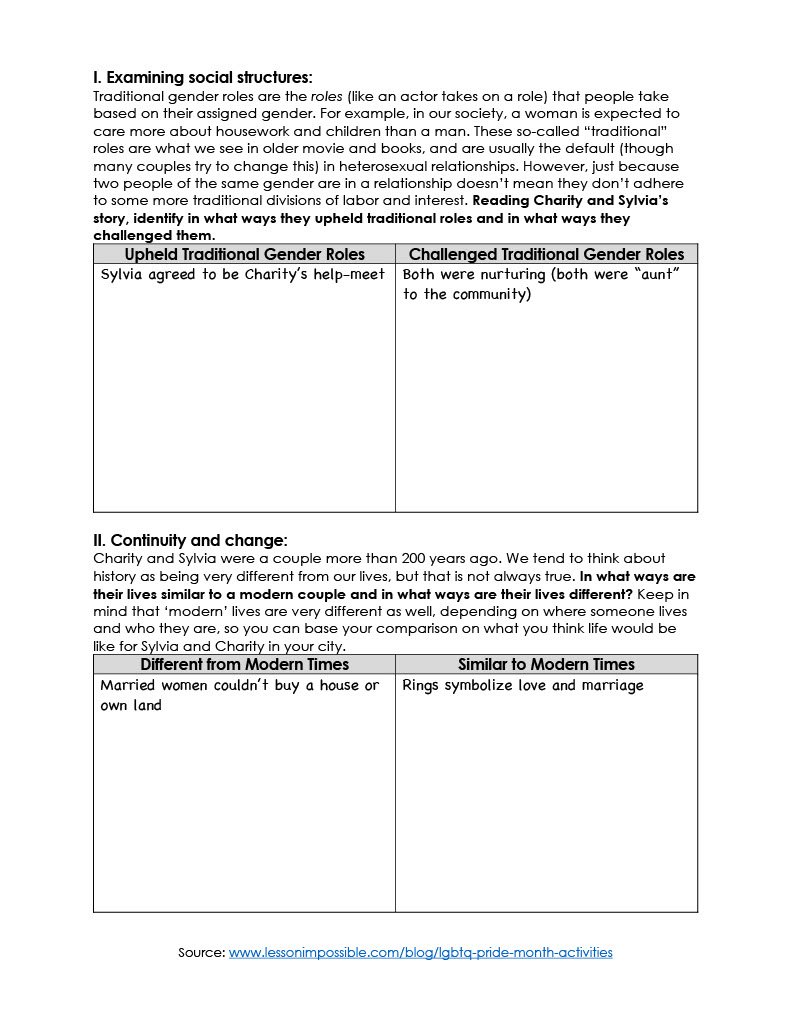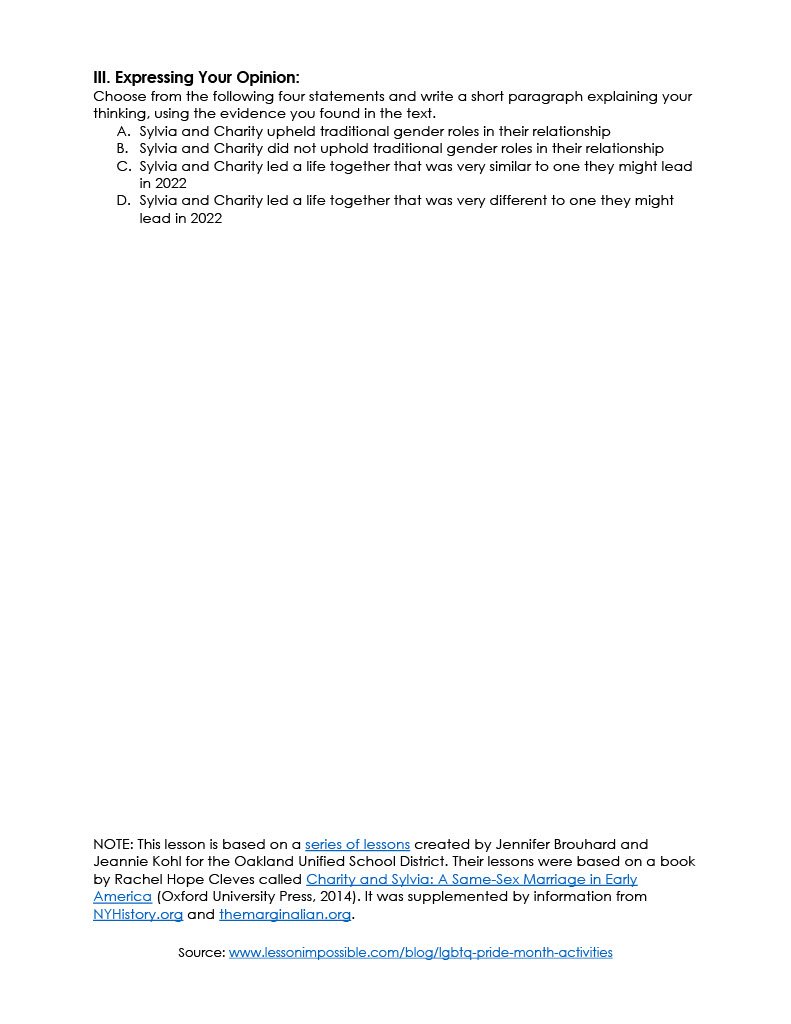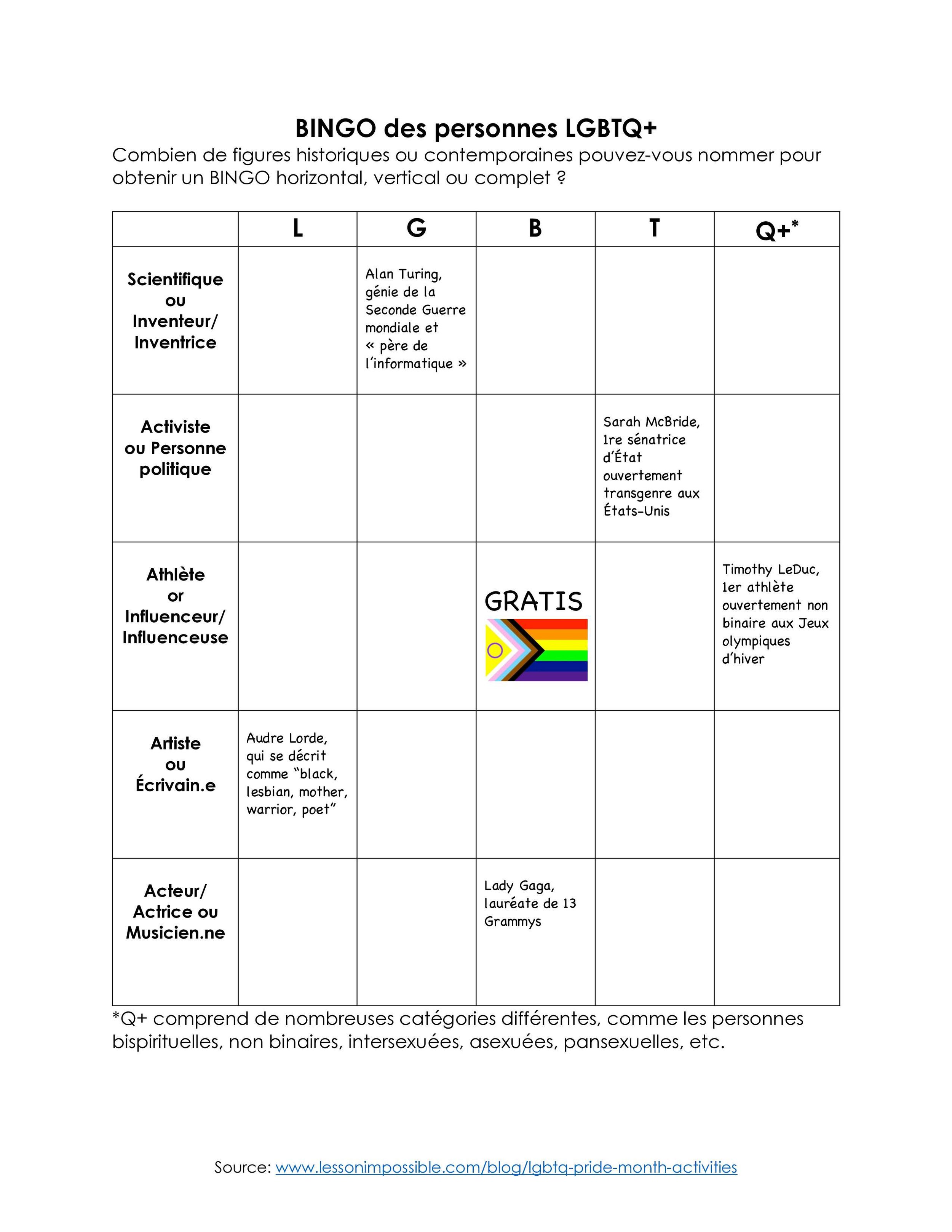Your language-teaching mission, should you choose to accept it, is to incorporate LGBTQ+ content into your lessons and be inclusive of all students in your class.
School is winding down, and grades are almost in, but we don’t want the meaningful lessons to stop. June is also Pride Month, a celebration of LGBTQ+ people, so why not do some activities that require little planning for you and that also celebrate Pride?
I have a few activities that I created originally for the Edmonds School District to celebrate Pride Month within various content areas, such as Science, Math and Art, which you can check out here. In this post, I thought I’d share some of the activities I personally created that can be used in ELA, ELL and Socials classes. I also have one that I adapted into French!
ELA/ELL Middle & High School LGBTQ+ Activity: Communicating through Poetry!
I found an amazing Audre Lorde quote and it inspired me to do an activity where students explore LGBTQ+ poets’ poems to find lines that communicate feelings and moments in their lives. I was able to find some (new-to-me) poets from a variety of backgrounds, including one haiku poem that I found on Twitter!
DOWNLOAD RESOURCE: Communicating through Poetry
ELL/ELA/Social Studies LGBTQ+ Activity: The amazing story of Charity and Sylvia, two women who lived at the beginning of the 19th century as a married couple in their small Vermont town. This activity has students investigating social structures and traditional gender roles, as well as comparing our modern day to history. This lesson is based on a series of lessons created by Jennifer Brouhard and Jeannie Kohl for the Oakland Unified School District. Their lessons were based on a book by Rachel Hope Cleves called Charity and Sylvia: A Same-Sex Marriage in Early America (Oxford University Press, 2014). The activity was also supplemented by information from NYHistory.org and themarginalian.org.
DOWNLOAD RESOURCE: Charity & Sylvia Reading, Questions, Answer Key
DOWNLOAD RESOURCE: Charity & Sylvia Reading, Questions, Answer Key (Adapted with Sentence Frame)
ELL/ELA/Social Studies Notable LGBTQ+ People Bingo: Have students discover a range of notable people in a variety of categories, from Artists, to Activists, to Athletes! Great for use with a substitute and some laptops/ipads or for a quick warm-up to the day’s lesson.
Note: WelcomingSchools.org has some excellent kid-friendly definitions for all the letters in LGBTQ and more.
DOWNLOAD RESOURCE: Notable LGBTQ+ People Bingo (in English)
DOWNLOAD RESOURCE: Notable LGBTQ+ People Bingo (in French)
If you’re looking for more resources, I highly recommend the following sites:
https://www.glsen.org/resources/educator-resources (check out https://www.glsen.org/activity/ready-set-respect-elementary-toolkit)
https://www.maine.gov/doe/learning/content/socialstudies/resources/DEI/LGBTQ
On the Lesson: Impossible blog, you can also check out:
My post on LGBTQ+ Inclusive textbooks
My post about the use of inclusive language, specifically focusing on French
Other activities for Women’s History Month, Arab-American History Month, and Celebrating Neurodiversity
How do you celebrate Pride in your classroom? Share in the comments below!


























